You absolutely should use your behavioral strengths to succeed, but what happens when you don't make adjustments?
Oftentimes, when I facilitate a DISC session and talk about adjusting your DISC style, participants wonder, "are you saying I need to be someone else?" Actually, it's quite the opposite. The goal is to embrace your true self and have a full understanding of your natural behavioral style(s), and how others perceive the style(s). DISC assessments are more than just self-awareness; they provide a map to show you where you are, and guide you through effective behavioral modification.

The 4 Steps to Effective Behavior Modification helps you make strategic adjustments to improve communications, interactions, and relationships. It's not just about self-awareness, but also responsibility. Now, you have the responsibility of owning your choice to adjust your behaviors or not.
Why is this important?What's the cost of not adjusting your behaviors?
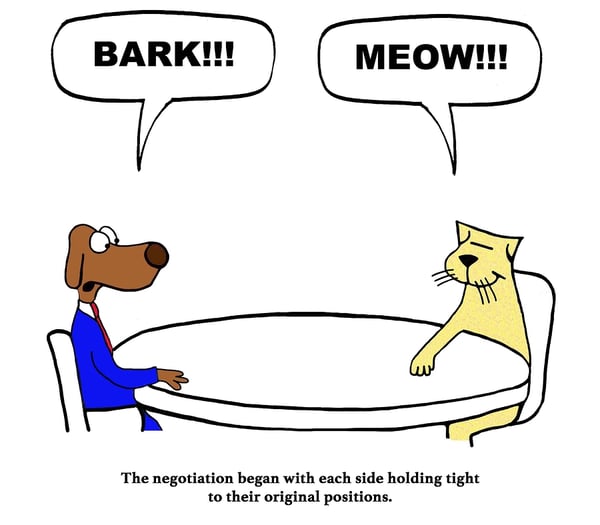 Not adjusting behaviors results in lower productivity because employees are not working to their full potential. It can lead to dissatisfied customers because they don't feel heard and/or understood. It can cause miscommunications and misunderstandings, which can lead to rework and/or a lack of innovation. Not adjusting behaviors causes trust to diminish, which can lead to a loss of credibility and/or loss of contacts.
Not adjusting behaviors results in lower productivity because employees are not working to their full potential. It can lead to dissatisfied customers because they don't feel heard and/or understood. It can cause miscommunications and misunderstandings, which can lead to rework and/or a lack of innovation. Not adjusting behaviors causes trust to diminish, which can lead to a loss of credibility and/or loss of contacts.
Don't just take my word for it, research shows that about $37 billion are lost yearly due to employee misunderstanding and bad communication (source: Holmes report). Can you afford to not make temporary, momentary adjustments?
Treat others the way they want to be treated
You're probably wondering, "Okay, you have my attention. I can't afford not to adjust my behaviors; but how do I do that?" I'm so glad you asked! You've probably heard of the Golden Rule, right? "Treat others like you want to be treated." However, in Step 1 of the Extended DISC 4 Steps to Effective Behavior Modification, we use the 4 quadrant DISC model to learn how people are similar and different. So, the Golden Rule only works if the other person is just like you and wants to be treated like yourself. Treating others the way they want to be treated is much more effective in getting the results you want out of an interaction.
You may be asking, "how do I know how they want to be treated?" Well, that requires knowing what drives the other person, what motivates them, and making adjustments to treat them the way they want, and sometimes the way they need, to be treated. DISC provides you with the knowledge of self-awareness and offers a roadmap to strategic behavioral responses based on the situation and the individual.
So, let's take a look at the 4 DISC styles and tips for adjusting.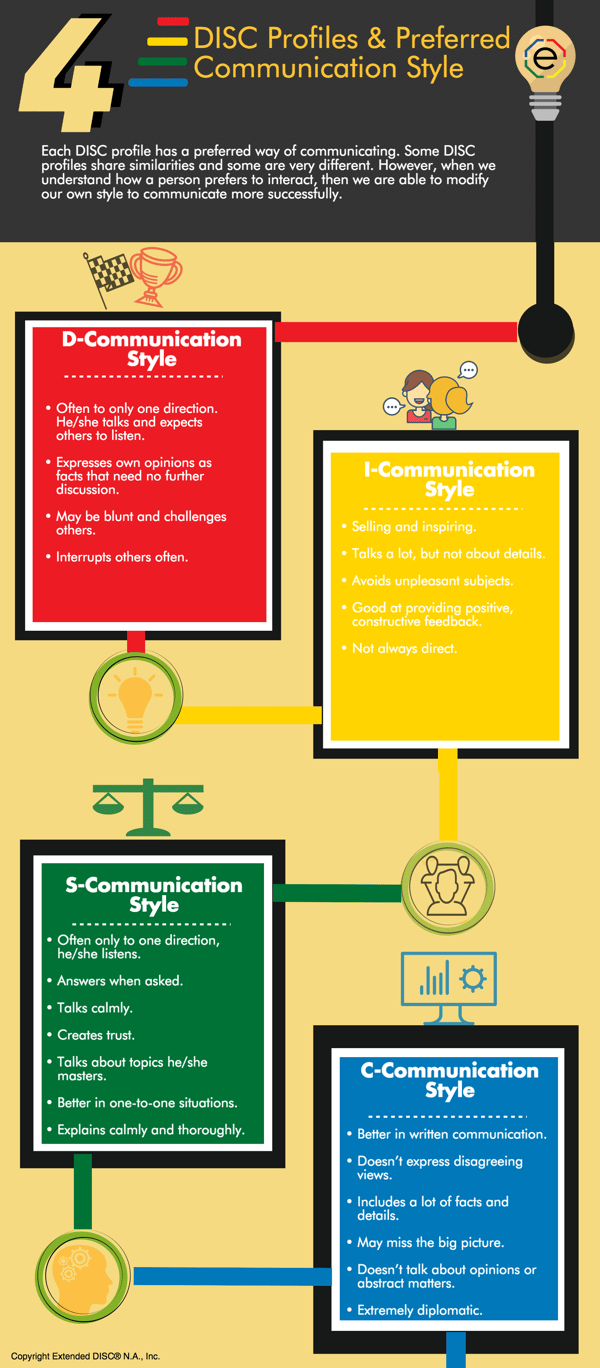
How do D-styles communicate?
You might remember D-style individuals enjoy being large and in charge. D-style(s) tend to dominate a conversation. They prefer one directional communication, "I talk, you listen." They have such command and presence when they speak that oftentimes their opinions come across as facts. Their communication style is often seen as very direct and focused on results. If you're communicating with a D-style, focus on results, be quick, and be specific.
Tips for a D-style to adjust
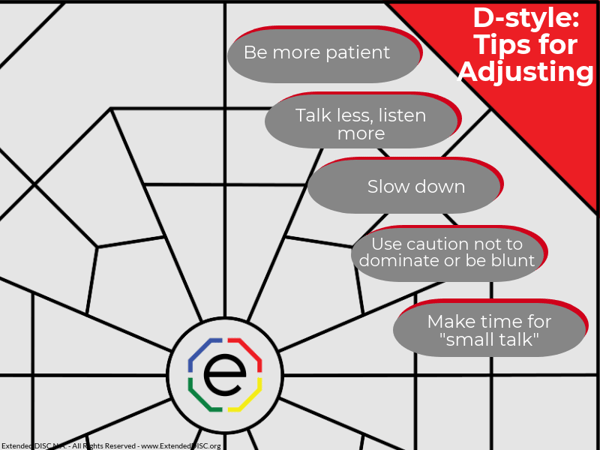 If you are a D-style here are some tips for adjusting your style to interact more effectively with the other DISC styles.
If you are a D-style here are some tips for adjusting your style to interact more effectively with the other DISC styles.
- Be more patient
- Talk less, listen more
- Slow down
- Use caution not to dominate or be blunt
- Make time for "small talk"
How do I-styles communicate?
The I-styles are the social butterflies of the styles. Their communication style focuses on the positive and tends to be inspirational. I-styles talk about people and feelings and typically, avoid details. So, if you're communicating with an I-style, create a friendly environment, provide them with opportunities to talk, and remain positive.
Tips for an I-style to adjust
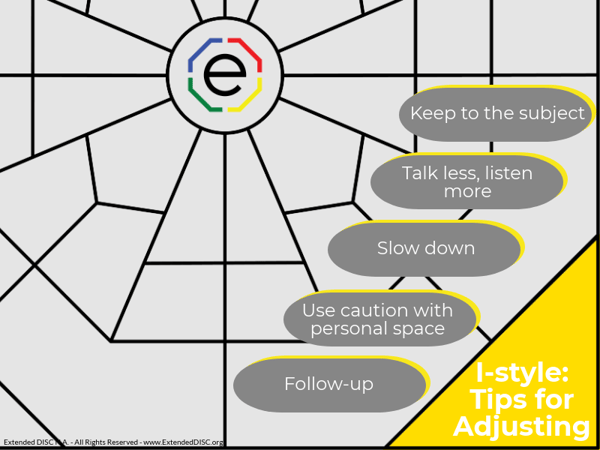 If you are an I-style here are some tips for adjusting your style to interact more effectively with the other DISC styles.
If you are an I-style here are some tips for adjusting your style to interact more effectively with the other DISC styles.
- Keep to the subject
- Talk less, listen more
- Slow down
- Use caution with personal space
- Follow-up
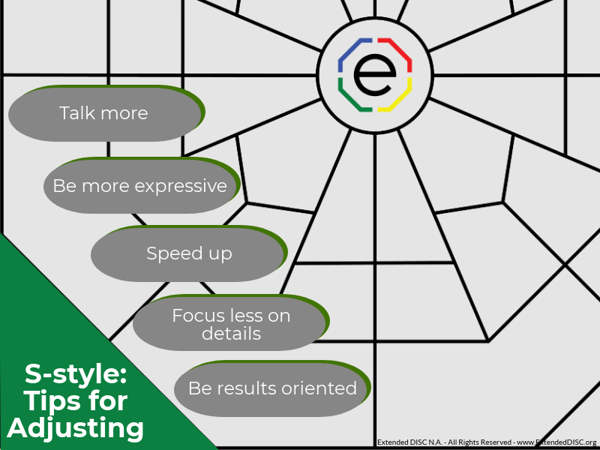
How do S-styles communicate?
S-styles are calm and patient, and so is their communication style. They often see many viewpoints and prefer to talk about issues they have mastered. Their communication style is often one directional, "you talk, I listen". So, if you're communicating with a S-style, slow it down. Take your time to build trust so you can draw out their opinions.
Tips for a S-style to adjust
If you are a S-style here are some tips for adjusting your style to interact more effectively with the other DISC styles.
- Talk more
- Be more expressive
- Speed up
- Focus less on details
- Be results oriented
How do C-styles communicate?
C-styles communicate with and about details and facts. Their communication style tends to be quiet and reserved. Oftentimes they keep their opinions and personal life private. Their communication can be viewed as logical and sometimes even critical. If you're communicating with a C-style focus on quality and use data and facts.
Tips for a C-style to adjust
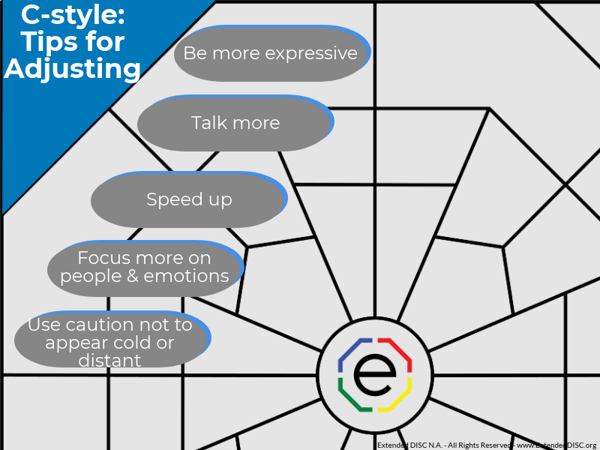 If you are a C-style here are some tips for adjusting your style to interact more effectively with the other DISC styles.
If you are a C-style here are some tips for adjusting your style to interact more effectively with the other DISC styles.
- Be more expressive
- Talk more
- Speed up
- Focus more on people and emotions
- Use caution not to appear cold or distant
Can you afford not to adjust?
So, next time you're frustrated, with someone who is either the same DISC style as you or a different DISC style than you, take a moment to think, "what's the cost of the interaction and/or relationship if you don't make a behavior modification with this person? Can you afford it?" And remember, it takes practice!

